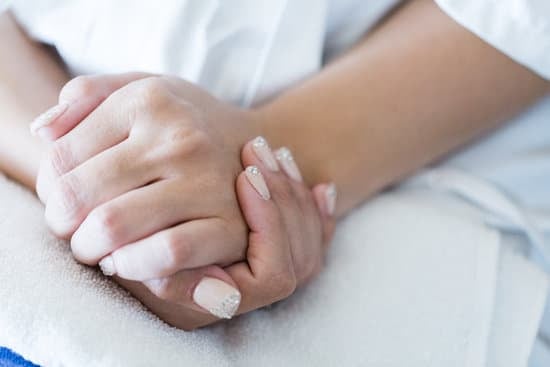The wedding ring has been a symbol of love and commitment for centuries, but have you ever wondered which finger is the wedding ring finger? In this article, we will explore the history, cultural significance, symbolism, and traditions surrounding the wedding ring finger. We will also discuss modern trends and preferences when it comes to choosing the perfect wedding ring for your finger.
The history of the wedding ring dates back to ancient Egypt, where rings were exchanged as a symbol of eternity. Over time, this tradition spread to other cultures and became an important part of marriage ceremonies around the world. The choice of which finger to wear the wedding ring on has varied through different cultures and time periods, leading to interesting traditions and customs.
Understanding the cultural significance and symbolism behind the wedding ring finger is essential for appreciating its importance in various societies. From religious beliefs to societal norms, the significance attached to this particular finger varies greatly from one culture to another. Let’s delve into these diverse traditions and explore how they have shaped our perceptions of the wedding ring finger.
Cultural Significance of the Wedding Ring Finger
The cultural significance of the wedding ring finger varies across different societies and has evolved over centuries. This section will explore the diverse customs and beliefs associated with the wedding ring finger, shedding light on how this tradition has been shaped by cultural practices and historical events.
Historical Origins
The practice of wearing a wedding ring on the fourth finger of the left hand can be traced back to ancient Egypt, where it was believed that a vein ran directly from this finger to the heart. This symbolism of love and connection influenced many cultures, leading to the tradition of wearing the wedding ring on this particular finger.
Religious and Spiritual Connotations
In Christianity, the exchange of rings during a wedding ceremony is considered a sacred ritual, symbolizing the union between two individuals in the eyes of God. Similarly, in Hindu culture, the placement of the wedding ring on specific fingers is associated with particular spiritual meanings and blessings for the couple.
Regional Variations
Different regions around the world have their own unique customs regarding which finger is designated for the wedding ring. For example, in some Eastern European countries, it is common for both men and women to wear their wedding rings on their right hands. Understanding these regional variations adds depth to our understanding of the cultural significance behind this enduring tradition.
As we delve into the cultural significance of the wedding ring finger, it becomes evident that this practice holds deep meaning rooted in history, spirituality, and diverse customs from around the world. Recognizing these rich cultural intricacies adds layers to our appreciation for this time-honored tradition.
Symbolism and Meaning Behind the Wedding Ring Finger
The wedding ring finger, also known as the fourth finger on the left hand, has been steeped in tradition and symbolism for centuries. One of the most common beliefs about why the wedding ring is worn on this particular finger dates back to ancient Rome. The Romans believed that this finger had a vein that was directly connected to the heart, which they called the “vena amoris” or the vein of love.
In addition to its physical connection to the heart, the placement of the wedding ring on the fourth finger also symbolizes love and commitment in many cultures. This tradition has been passed down through generations and is a significant aspect of marriage ceremonies around the world. The wedding ring finger serves as a constant reminder of the vows and promises made between partners, signifying their eternal love and devotion.
The placement of the wedding ring on this specific finger carries deep emotional significance for couples. It represents unity, fidelity, and an unbreakable bond between spouses. The circular shape of the ring itself symbolizes never-ending love and commitment. It’s no wonder that this timeless tradition continues to hold such profound meaning for people across different cultures and societies.
| Wedding Ring Finger Traditions | Symbolism Behind It |
|---|---|
| Roman belief in “vena amoris” | Physical connection to heart; “vein of love” |
| Unity and fidelity | Eternal love and devotion; never-ending commitment |
Different Traditions Around the World Regarding the Wedding Ring Finger
When it comes to the placement of the wedding ring, different cultures and traditions have their own unique practices. Here are some interesting traditions from around the world:
1. United States and Canada: In these countries, it is common for couples to wear their wedding rings on the fourth finger of their left hand. This tradition dates back to ancient Egypt, where it was believed that a vein ran directly from this finger to the heart, making it the “vena amoris” or vein of love.
2. India: In Indian culture, the placement of the wedding ring varies depending on region and religion. In some parts of India, the bride wears her wedding ring on the toe instead of the finger, while in other regions, both partners may wear their rings on their right hand instead of their left.
3. Germany: German couples traditionally wear their wedding rings on their right hand. After exchanging vows during the wedding ceremony, they switch their rings from their right hands to their left hands to symbolize that they are now married.
These different traditions highlight the cultural diversity and significance of the wedding ring finger around the world. It’s fascinating to see how each culture has its own interpretation and customs when it comes to wearing this special piece of jewelry.
The Anatomy of the Wedding Ring Finger
The wedding ring finger, also known as the fourth finger or the ring finger, holds a special significance in many cultures around the world. But have you ever wondered why this particular finger is chosen to wear the wedding ring? Let’s explore the anatomy of the wedding ring finger and uncover the reasons behind its prominence in matrimonial traditions.
Anatomically speaking, the wedding ring finger is the fourth digit of the hand, located between the middle finger and little finger. It is known as “digitus medicinalis” in Latin, which translates to “the physician’s finger,” as it was believed that this finger had a direct vein connection to the heart. This ancient belief has contributed to the custom of placing the wedding ring on this specific finger, symbolizing love and commitment that flows directly to the heart.
In some cultures, such as in Western countries like the United States and Canada, it is tradition for men to wear their wedding band on their left hand’s fourth finger. On the other hand (pun intended), women often wear their wedding band on their right hand’s fourth finger. However, cultural variations exist worldwide regarding which hand and which specific fourth finger should be adorned with a wedding ring.
Modern Trends and Preferences for the Wedding Ring Finger
Personalization and Customization
Couples today are increasingly opting for personalized and customized wedding rings that reflect their unique style and personalities. From engraving initials or special dates to choosing non-traditional gemstones, modern couples are redefining the traditional wedding ring finger with creative and personalized designs.
Alternative Metals and Materials
While gold and platinum have been the go-to choices for wedding ring bands, modern trends have introduced alternative metals such as titanium, tungsten, and even wood. These new materials offer durability, uniqueness, and a break from the traditional wedding ring finger norms.
Stacking Rings
Another trend gaining popularity is the concept of stacking rings on the wedding ring finger. Whether it’s adding additional bands to complement the engagement ring or creating a unique mix of metals and styles, stacking rings allow couples to express their individuality while still honoring the symbolism of the wedding ring finger.
As couples continue to seek ways to personalize their love symbols on their wedding ring fingers, these modern trends reflect the evolving preferences in design, materials, and styles. The traditional significance of the wedding ring finger remains strong, but these new trends add a contemporary touch to an age-old tradition.
How to Choose the Perfect Wedding Ring for Your Finger
When it comes to choosing the perfect wedding ring for your finger, there are a few factors to consider. First and foremost is the size and shape of your finger.
It’s important to select a ring that not only fits comfortably but also complements the size and shape of your finger. For example, if you have long, slender fingers, you may want to opt for a narrower band, whereas if you have shorter fingers, a thicker band may be more suitable.
Another consideration when choosing a wedding ring for your finger is the metal type. The most common options are gold, platinum, and silver. Gold is available in different shades such as yellow gold, white gold, and rose gold. Platinum is particularly popular for its durability and hypoallergenic properties. Silver is a more affordable option but requires more maintenance due to its tendency to tarnish.
Lastly, think about any additional design elements you may want on your wedding ring. This could include diamonds or other gemstones, intricate engravings, or unique finishes. Consider whether these elements complement your personal style and if they hold any special significance to you as a couple.
It’s essential that when choosing the perfect wedding ring for your finger, both partners are involved in the decision-making process. This will ensure that the chosen rings reflect both of your personalities and symbolize your commitment to each other.
| Factor | Consideration |
|---|---|
| Size and Shape of Finger | Select a ring that fits comfortably and complements the size and shape of your finger. |
| Metal Type | Consider options such as gold (yellow, white, or rose), platinum, or silver based on durability and personal preferences. |
| Design Elements | Think about diamonds/gemstones, engravings, or finishes that hold special significance. |
Tips for Taking Care of Your Wedding Ring Finger and Ring
When it comes to taking care of your wedding ring finger and the ring itself, there are a few important tips to keep in mind. First and foremost, it’s essential to keep your wedding ring clean in order to maintain its sparkle and shine.
Depending on the material of your ring, such as gold, silver, or platinum, there are specific cleaning methods you should use to prevent damage. A simple mix of mild soap and warm water can work wonders for most types of wedding rings.
It’s also important to consider the potential for wear and tear on your ring finger over time. Wearing a ring every day can cause some natural wear, which may require periodic resizing or maintenance to ensure a comfortable fit. If you engage in activities that could potentially damage your ring or injure your finger-such as heavy lifting or sports-it’s advisable to remove the ring temporarily.
Lastly, remember to take care of your actual wedding ring finger by keeping it hydrated with lotion and protecting it from harsh elements. If you live in a particularly dry climate or work with substances that can dehydrate your skin, pay special attention to moisturizing this finger effectively.
By following these tips for taking care of both your wedding ring finger and the ring itself, you can ensure that both will remain in excellent condition for years to come. Your wedding ring is a symbol of love and commitment that deserves proper care and attention.
The Future of the Wedding Ring Finger
In conclusion, the wedding ring finger has a rich history and cultural significance that varies around the world. Whether it’s the fourth finger on the left hand or another digit, the symbolism and meaning behind the wedding ring finger remain constant. While traditions and customs have evolved over time, with some cultures even shifting to different fingers for the wedding ring, the sentiment behind this tradition remains strong.
As modern trends and preferences continue to influence our choices, there are more options than ever for choosing the perfect wedding ring for your finger. From traditional metal bands to contemporary designs with gemstones, there is a wide range of choices to suit individual style and personality.
While traditions may continue to change in the future, taking care of your wedding ring finger and ring will always be important. With proper maintenance and care, your wedding ring can last a lifetime and continue to symbolize the love and commitment it represents. As we look ahead to the future of the wedding ring finger, it may be interesting to see how changing traditions and customs will continue to shape this timeless symbol of love and unity.
Frequently Asked Questions
Is the Wedding Ring on the Right or Left Hand?
The wedding ring is traditionally worn on the left hand. This custom varies by culture, with some countries wearing it on the right hand. In Western cultures, it’s typically the left hand.
Which Finger Is for Marriage Ring?
The finger for the marriage ring is the fourth finger on the left hand, also known as the “ring finger.” This tradition dates back to ancient times, where it was believed that a vein directly connected this finger to the heart.
Which Is the Ring Finger for Female?
The ring finger for females is also the fourth finger on the left hand. In many Western cultures, both men and women wear their wedding rings on this finger as a symbol of their commitment and love for each other.

I have been involved in marriages for over 20 years helping couples and singles understand more about them.





